Sabrent Rocket NVMe 4.0 500GB Performance Testing
We are moving towards using larger test sizes on our benchmarks, but on several tests, we also used the smaller default-test sizes. This allows us to see the difference between lighter and heavier workloads. Unfortunately, our entire backlog of SSD reviews did not include this testing methodology, so we are doing the best we can with generating comparison charts.
Blackmagic Disk Speed Test
This is a popular speed test in the video community. It shows whether a storage device is suitable for throughput required at a given video format.
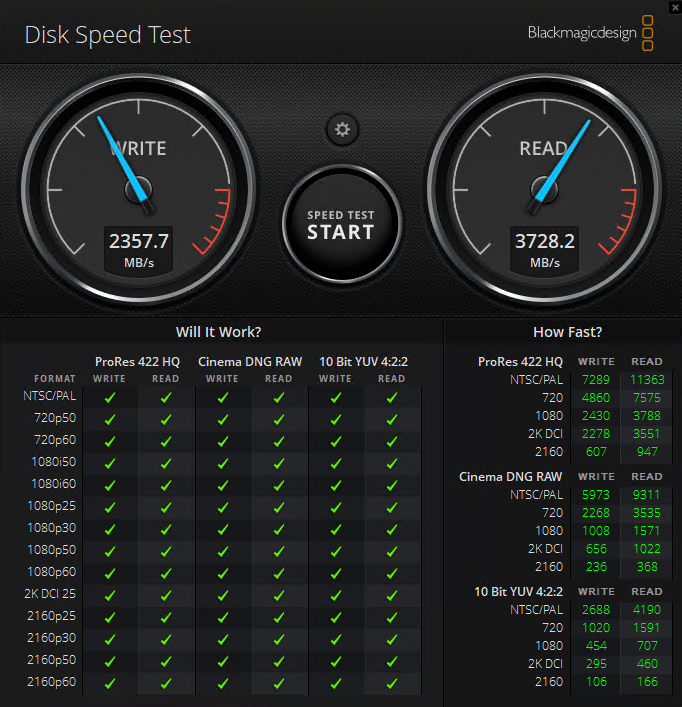
As a PCIe 4.0 NVMe SSD, the Rocket NVMe 4.0 500GB has a good showing here and handles every format this benchmark can test for.
CrystalDiskMark 7.0.0 x64
CrystalDiskMark is used as a basic starting point for benchmarks as it is something commonly run by end-users as a sanity check.
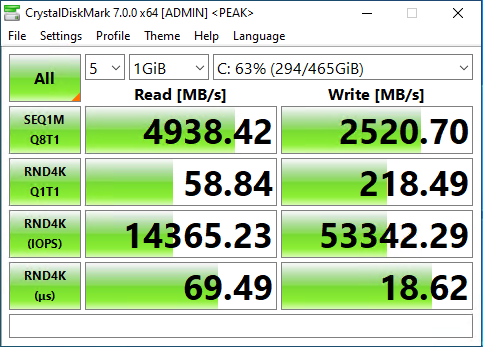
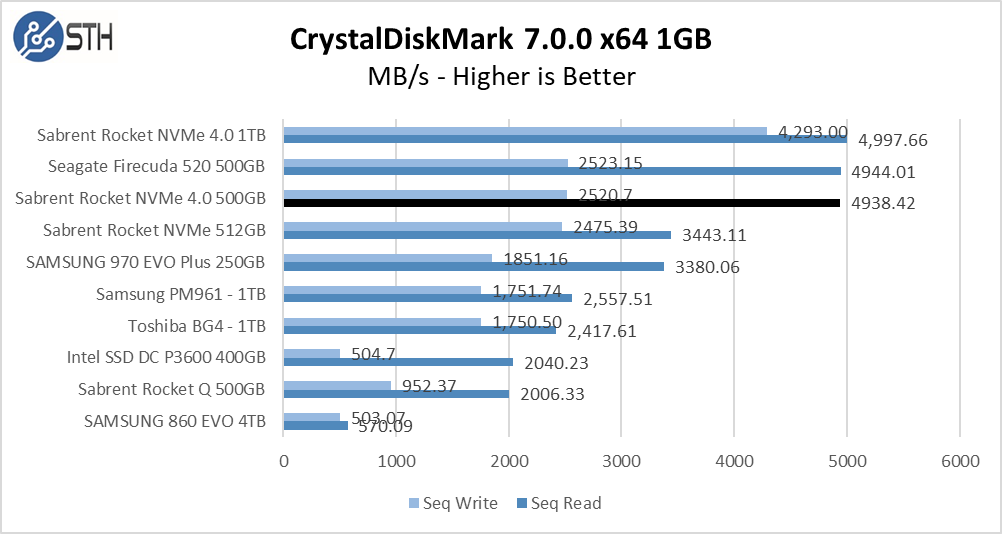
Using the 1GB test set, the Rocket NVMe 4.0 500GB is achieving numbers almost exactly at the advertised 5000MB/s read and 2500MB/s write. As a result, the read speed easily beats out any PCIe 3.0 SSD. While the write speed is still very good it is not really taking advantage of the PCIe 4.0 interface.
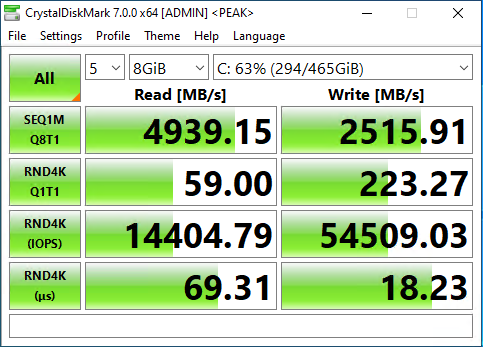
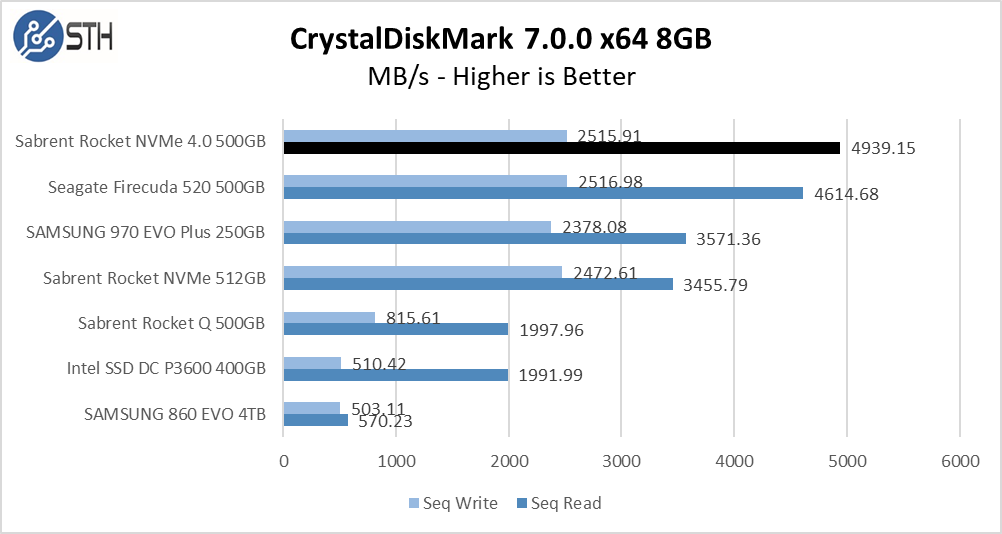
With an 8GB test set, both read and write performance is unaffected by the larger test set, which is a good sign and allows the Rocket to overtake the Firecuda at the top of our chart.
ATTO Disk Benchmark
The ATTO Disk Benchmark has been a staple of drive sequential performance testing for years. ATTO was tested at both 256MB and 8GB file sizes.
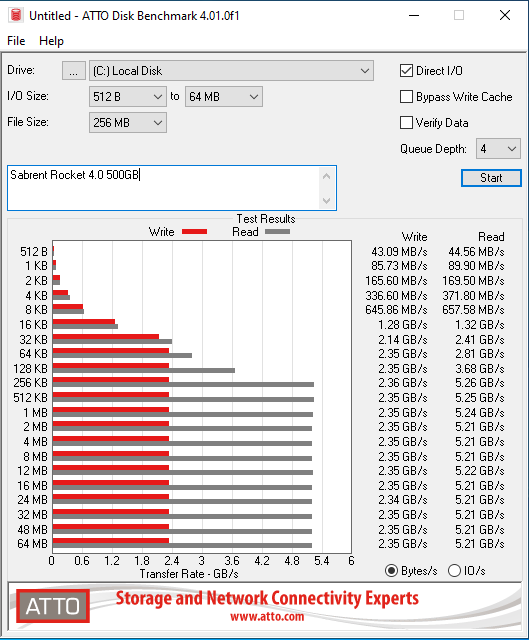
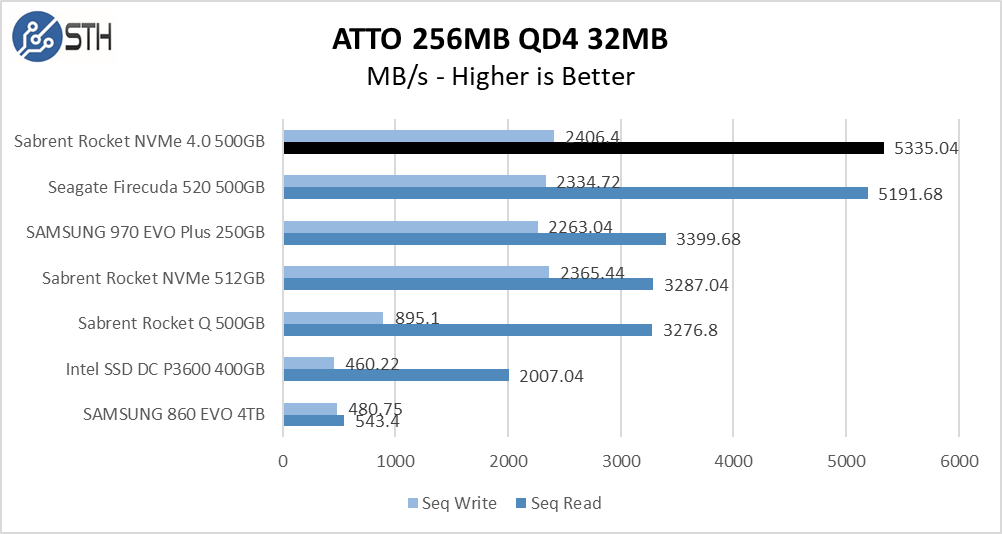
Similar to CrystalDiskMark, ATTO performance is good. Here the read performance is above the advertised 5000MB/s, while the write speeds do not quite hit their 2500MB/s mark.
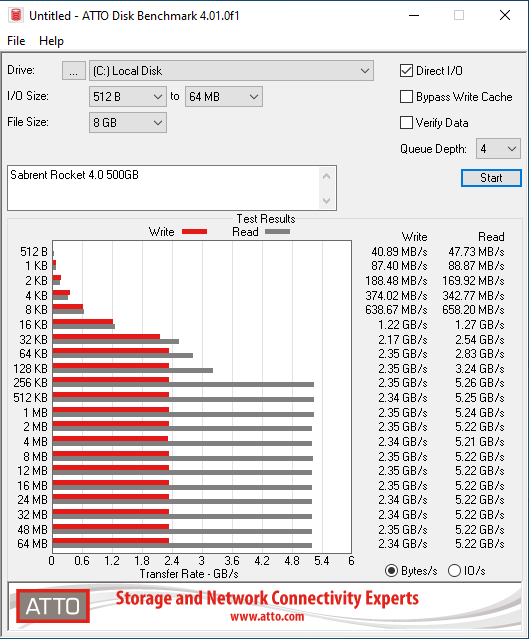
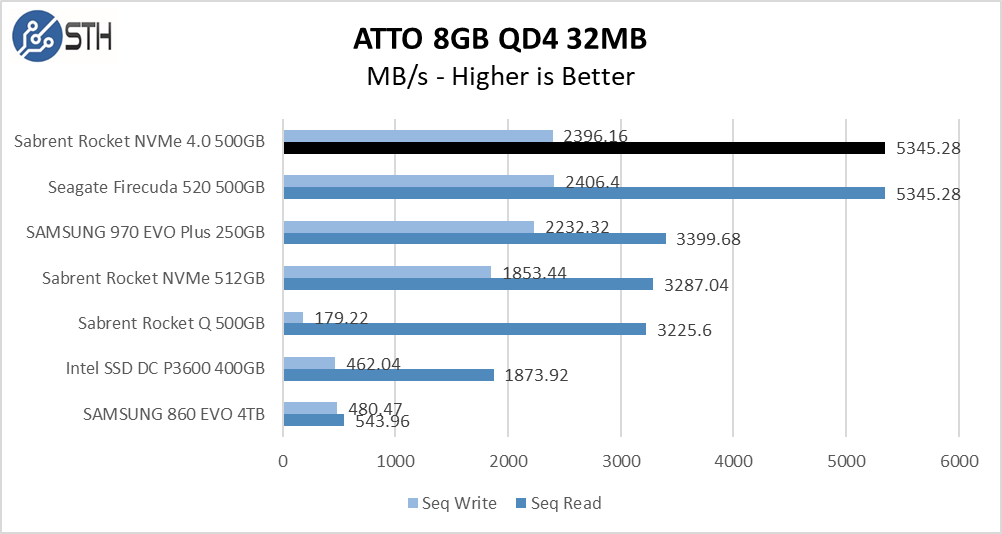
Similar to the Seagate, once we moved to the 8GB file size, the Rocket NVMe 4.0 500GB seemed to stretch its legs, and performance improves compared to the smaller test. This extends the margin of victory over the previous generation drives.
Anvil’s Storage Utilities
Anvil’s Storage Utilities is a comprehensive benchmark that gives us a very in-depth look at the performance of drives tested. This benchmark was run with both a 1GB and 8GB test size.
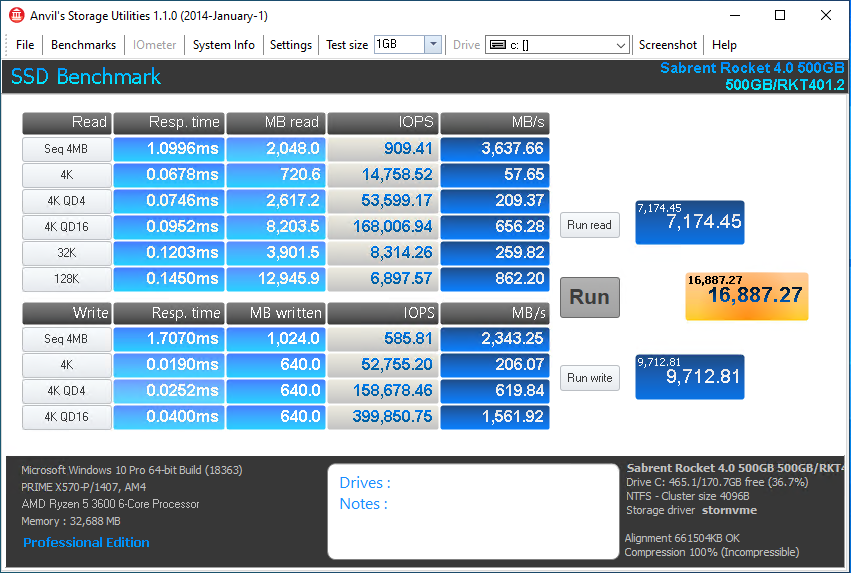
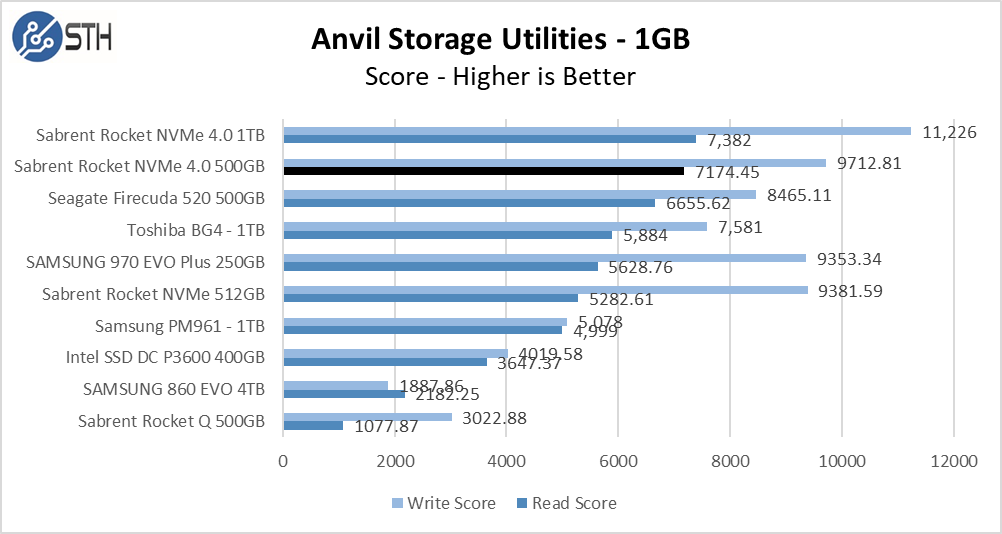
With Anvil running a 1GB test size, sequential performance still beats out any PCIe 3.0 SSD and the read numbers are very good. In this test performance easily bests the Firecuda and manages to hold a lead against the PCIe 3.0 drives in write speeds.
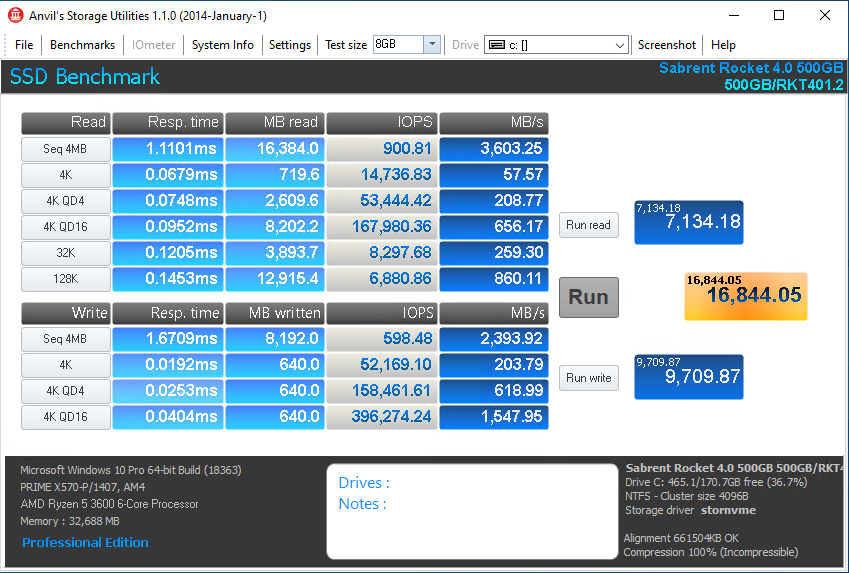
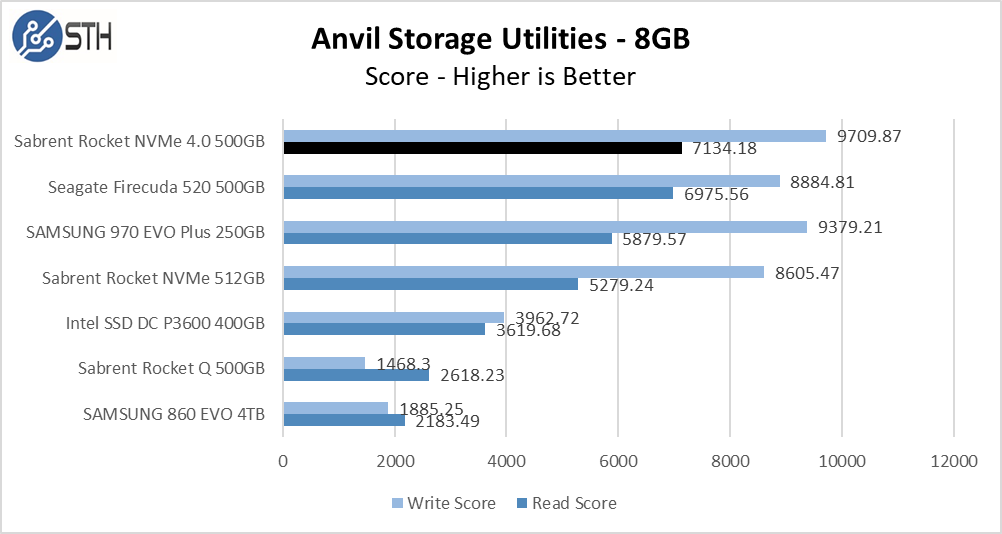
With the larger 8GB test size, the Sabrent Rocket NVMe 4.0 500GB maintains its performance and tops our chart.
AS SSD Benchmark
AS SSD Benchmark is another good benchmark for testing SSDs. We run all three tests for our series. Like other utilities, it was run with both the default 1GB as well as a larger 10GB test set.
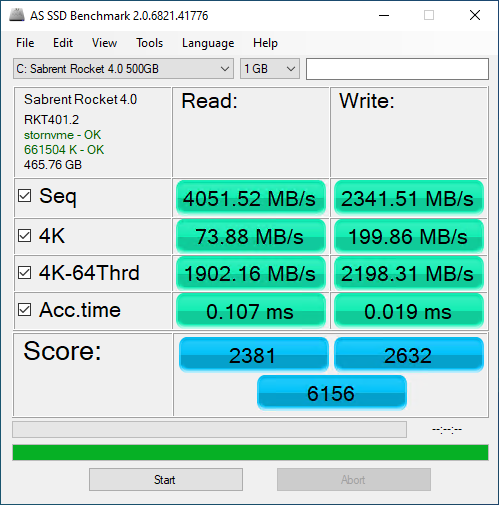
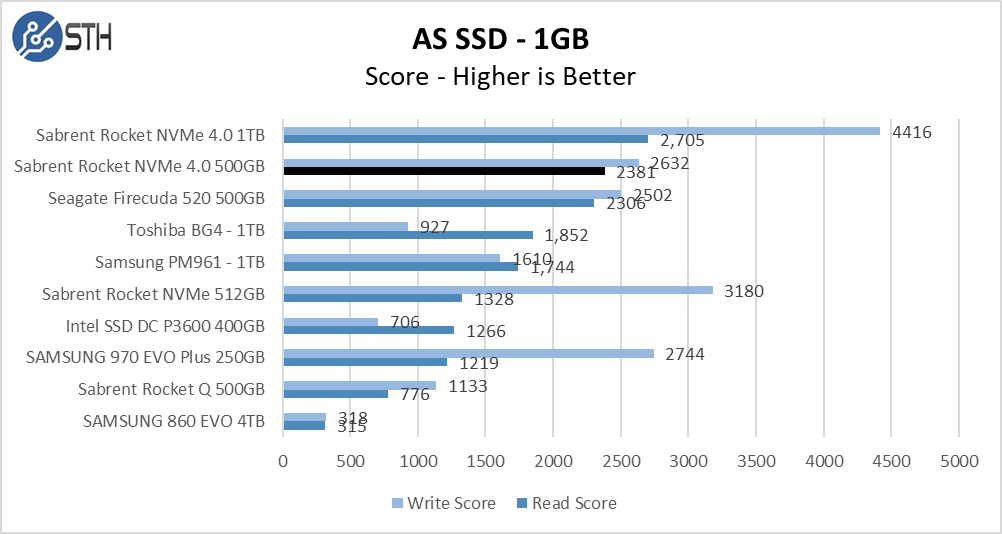
With the smaller test set, the Rocket NVMe 4.0 500GB continues its trend of being slightly faster than the Firecuda 520. Unlike in previous tests though, the recently reviewed Sabrent Rocket NVMe 512GB drive manages a good margin of victory in write performance over the Seagate drive.
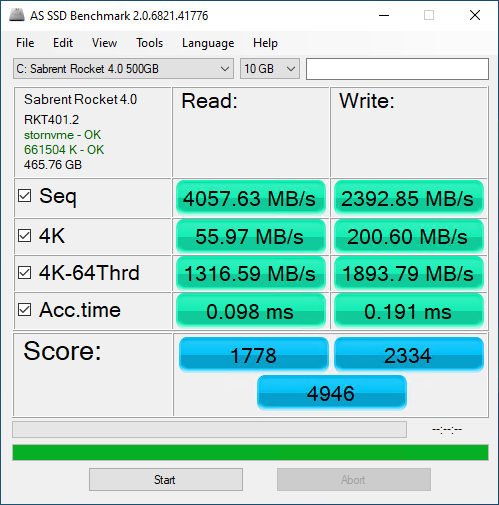
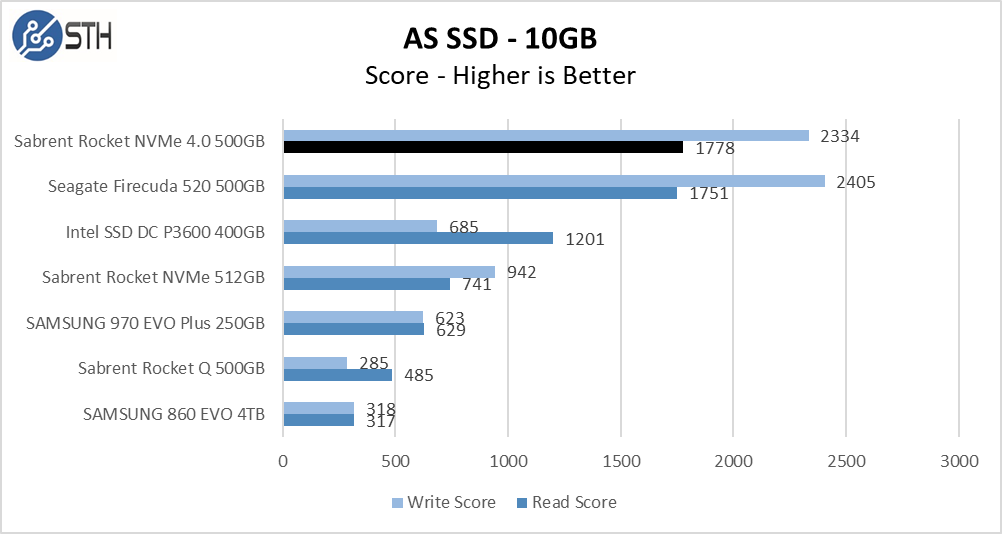
With AS SSD the larger test set has little impact on the sequential numbers, but the 4K-64Thread read results are lower by a bit. The Rocket manages to squeak out a win in read score but slightly loses to the Firecuda in write score.
PCMark, SPECworkstation, and our conclusion are up next.




Testing somethig like pci 4.0 device without testing latency is pointless.
I have to admit, i never really look at the review score, and normally look at the “Conclusion”/”Final words” section to get a first impression of how a product fared in the review. So, it is kinda weird that i just only now saw that there is a Design&Aesthetics ranking, which baffles me to no end.
To make it clear, this is sort of a short rant not specifically about this SSD here nor Will’s great work.
As everybody can probably tell by now, I am not really a fan of Design&Aesthetics ranking, and how much it seems to contribute to the final score. I know, numerical scoring in reviews is debatable anyway. But hey, there is the numerical scoring right here, so…
Rating functional aspects of a product using some scalar value can make sense, as often there can be a set of criteria/checkboxes (a metric) defined, with the scalar value being some kind of aggregate representation of how many of those criteria were met to which degrees.
But what does that Design&Aesthetics value mean, and what is it based on? Isn’t aesthetics based on a subjective evaluation of appearance? Is Design&Aesthetics value here based on some statistical model of how aesthetically pleasing a product would be to a group of statistically average humans, or is it just representing the perceived rise in body temperature when the reviewer fondly looked at the product?
Now that i have become aware of the Design&Aesthetics ranking, it has become an irresistable mystery to me. Please help me!
I can just agree with Dr. Manhattan here, though I have wondered for long what the design rating is for but without ever asking the question “out loud”.
Could anyone on the STH team give some insight into this, or much rather, give a deep dive about how the scoring is done in general?
Guys, I agree that the Design and Aesthetics is less impactful on a M.2 SSD review. Will was asking me about this as well. We need to keep it in otherwise the back-end database gets unhappy since other reviews have it.
We have gone over scoring a few times in comments already. As always, feel free to read the review for a deep-dive into what is driving the summarized view. We focus a lot more on the depth as one can see.